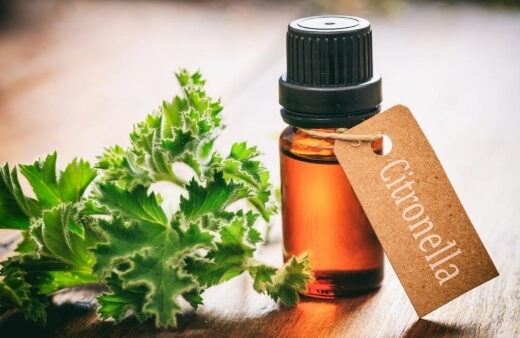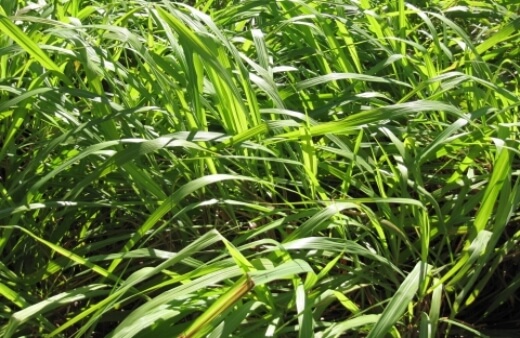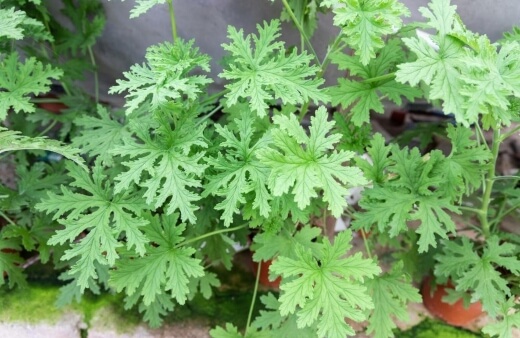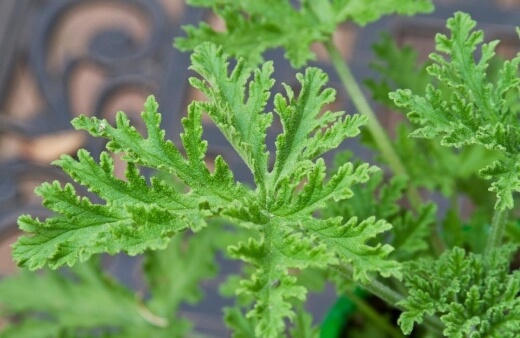Are you looking for hardy perennials to add to your garden? Tropical plants like citronella plants are a great fit for Australian gardens. These low-maintenance subshrubs cope well with the local climate, but also make for an impressive addition to any outdoor space.
Although many gardeners avoid growing citronella plants from seed, these perennials are fairly easy to propagate from stem cuttings. Citronella plants require plenty of sunlight, making them the perfect pairing to the Australian climate.
Once established, these drought-proof plants will only require occasional watering and fertiliser treatments. Eager to introduce a tropical new addition to your garden? Below is everything you need to know about growing citronella plants.
More...
What are Citronella Plants?

Although there are dozens of recognised citronella varieties in the world, only a handful are commonly used in domestic gardens. When we talk about citronella plants, we're usually referring to specific varieties of citronella grass, as well as an aromatic geranium.
All of these plants boast a similar fragrance, but only citronella itself contains the synonymous essential oil. Citronella grass is one of the most impressive varieties around.
Native to tropical Asia, this ornamental perennial grass boasts eye-catching leaf blades that can grow to lengths of 40 inches, with vivid greens complemented by subtle red accents.
The signature citrusy aromas of these perennials also make them a fragrant addition to any outdoor space. Although most varieties are capable of flowering, most gardeners choose to remove seed heads from mature plants to prevent accidental propagation.
Types of Citronella Plants
Citronella plants are a popular choice for gardeners looking to introduce enticing aromas into their garden. Below are a few of the most popular varieties for you to consider:
Citronella Grass (Cymbopogon nardus)

More commonly known as citronella grass, this hardy perennial comes from the Poaceae family and is native to tropical Asian regions. Closely related to lemongrass, this inedible plant is particularly aromatic and is where citronella oil is derived from.
Jave Citronella (Cymbopogon winterianus)

Source: Tropical.theferns.info
Another variety of citronella grass from the Poaceae family, this perennial originates in Malesia. Otherwise known as java citronella, this plant is another aromatic option thanks to the oil it contains.
Mosquito Plant (Pelargonium citrosum)

Unlike the other plants outlined above, citronella geraniums derive from a different family entirely. It is thought to be a cultivar of the Pelargonium graveolens species that is native to some parts of Africa.
Better known as the mosquito plant, this perennial subshrub may share a similar aroma to citronella grass but looks decidedly different thanks to its broad leaves and serrated textures.
Citronella Grass (Cymbopogon nardus)More commonly known as citronella grass, this hardy perennial comes from the Poaceae family and is native to tropical Asian regions. Closely related to lemongrass, this inedible plant is particularly aromatic and is where citronella oil is derived from. |  |
Jave Citronella (Cymbopogon winterianus)Another variety of citronella grass from the Poaceae family, this perennial originates in Malesia. Otherwise known as java citronella, this plant is another aromatic option thanks to the oil it contains. |  Source: Tropical.theferns.info |
Mosquito Plant (Pelargonium citrosum)Unlike the other plants outlined above, citronella geraniums derive from a different family entirely. It is thought to be a cultivar of the Pelargonium graveolens species that is native to some parts of Africa. |  |
How to Grow Citronella in Australia
Citronella plants are particularly robust, making them an excellent choice for Australian gardeners. Immature plants can be kept indoors in pots or planted directly into the soil of your garden.
However, citronella grass and geranium varieties require a slightly different approach when it comes to outdoor planting.

Planting Citronella
Citronella geraniums can be purchased as immature plants from just about any garden centre. Although growing new plants from seed is possible, it's far easier to propagate new plants from a stem cutting.
To get started, you'll need to make a clean cut from a healthy plant. Ideally, you'll want a cutting that boasts at least two nodes on the stem. One of these nodes will be planted beneath the soil line, from which new roots will grow.
Once you've taken a cutting, you can focus on removing leaves. However, you'll need to leave a minimum of two leaves if you want a new plant to propagate.
Avoid leaving behind leaves that are too large, as these can drain away essential moisture from the cutting as it roots in and attempts to grow.
If you want to give your cutting a fighting chance, use rooting hormone to encourage the development of healthy roots. If you don't have any to hand, ensure you're using high-grade potting soil.
Once the plant has rooted and begins to mature, you need to ensure it receives plenty of sunlight. As a minimum, your growing citronella plant will need at least six hours of sunlight every day.
These hardy perennials should do well outdoors throughout the year. However, if you experienced a significant cold snap that lasts for any length of time, it may be worth temporarily migrating your plants indoors.
An established geranium should be able to cope with short-lived droughts, but you should aim to water your plant regularly. If the top level of soil around your plant is dry, don't be afraid to give it a generous watering.
Citronella grass plants are less readily available than geranium alternatives, but you may be lucky enough to find some young plants for sale in your garden centre.
Transplanting Citronella from Pots

When transplanting young citronella grass plants from pots, you need to establish whether you have sufficient space for them. Bear in mind that citronella grass can grow to heights of six feet or more.
Mature plants can also grow to widths of six feet, requiring you to think carefully about spacing if you plan on planting multiple plants.
Citronella grass doesn't do well under the full glare of the sun, so pick a partially shaded area of your garden that will filter out the brunt of the sun's rays.
Most citronella grass varieties will also require loamy conditions to thrive, so you may need to carry out some soil adjustments before planting. Here is our guide on loam soil for your reference.
Citronella grass is a particularly thirsty plant, so you'll need to commit to a daily watering schedule to replicate the moisture-rich conditions of its native habitat.
Citronella Plant Care Guide

Citronella plants are low-maintenance, although you'll need to keep an eye on moisture levels. During the hotter summer months, make sure you're watering your plants daily.
When the cooler weather rolls around, you'll need to inspect moisture levels to ensure you're not overwatering your plants and damaging roots. Fertilisers can also help encourage optimum growth.
Using a slow-release treatment at the start of spring is always a good idea. You can then use liquid fertiliser once a month. Because it's a perennial, citronella can be left to its own devices throughout the year.
However, you may need to carry out occasional pruning to ensure your plants are looking their best. For best results, leave the pruning until the Autumn months.
You can be quite liberal when it comes to trimming your citronella grass down. Check out our review on the best garden secateurs if you don't have one available.
Provided you leave plants standing at a height of around six inches, you should experience healthy new growth come the spring.
Common Citronella Pests and Diseases for Citronella
Unlike many other perennials, citronella plants aren't susceptible to any particular diseases or common garden pests. However, they do have a habit of becoming pests themselves if seed heads aren't removed.
Citronella Plants Frequently Asked Questions
Do citronella plants really keep mosquitoes away?
These plants are also commonly known as mosquito plants as they release a scent that mosquitoes don’t like. They are very effective at deterring mosquitoes in small areas.
Where do citronella plants grow best?
For the best growing results, plant your citronella in full sun to partial shade where there is at least six hours of sunlight each day.
Is citronella native to Australia?
Citronella grass (Cymbopogon bombycinus) is native to Australia. Most of the popular species of citronella are native to the Asian regions.
What bugs does citronella keep away?
These plants are effective against a wide variety of pests including but not limited to flies, mosquitoes and ticks which are many of our more invasive everyday pests.
Is citronella toxic to dogs?
Citronella plants are considered toxic to both cats and dogs.
Will citronella grow back every year?
Yes, citronella plants (both the grasses and the geraniums) are perennial so they will grow back each year, especially in warmer climates. In colder climates, they might die over winter which leads many gardeners to rather establish an annual citronella.
Can you cut and replant citronella?
Citronella plants are best propagated by seed or cuttings. Stem cuttings should be at least 5 to 7 centimetres in length for the best results.
How long does a citronella plant live?
Being perennials, these plants will live for more than 2 years. For continuous growth in your garden, be sure to take cuttings before winter starts to start establishing new plants as replacements.
Author Bio:
Ray Brosnan is the co-owner of Brosnan Property Solutions, a property maintenance company. Ray and his team of garden landscapers are kept busy during the summer months.
During winter, his team of plumbers and electricians are all hands-on deck. Ray and his brother have been running the business since 1997.

Start Growing Citronella Plants in Your Garden
Ready to transform your garden into your very own tropical getaway? Citronella plants are a perfect choice. These low-maintenance plants thrive in the Australian climate and bring with them an enchanting aroma.
What's more, healthy plants can grow to an impressive height, easily filling up a barren patch or unloved outdoor corner. Once mature plants have been established, you can continue to grow new specimens from stem cuttings without ever having to buy a potted plant again.
There you have it! You are now ready to start growing citronella plants in your home.
Published on January 6, 2023 by Gary Clarke
Last Updated on February 22, 2024




